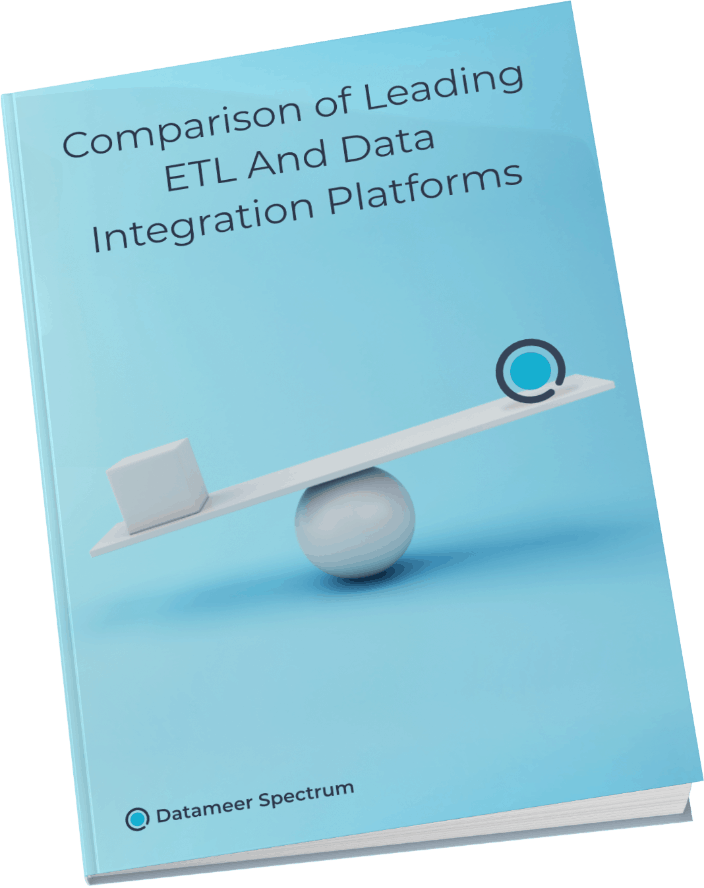
Comparison of Leading ETL and Data Integration Platforms
To ensure your organization is maximizing the value of business data, you need the right data integration solution. See how the leading ETL platforms stack up.

About the Comparison of Leading ETL and Data Integration Platforms Ebook
Today, enterprises produce enormous amounts of data in their daily operations. This includes transactional data generated from online and offline orders, machine data collected from equipment and sensors, and even social data created from likes and comments on social media platforms.
When all your data is organized and integrated, powerful analytics tools can generate business insights that translate into competitive advantages for your business. But without consolidated data, your data analytics will be inaccurate and incomplete.
Data integration solutions can automate data pipelines and generate a visual data flow for priceless insights into your organization. By uncovering strategic strengths and weaknesses, you can empower improvements in your business practices and processes. The result is more informed decisions, greater employee productivity, and better data management.
Datameer Spectrum (ETL++)
Hybrid ETL and ELT platform that support both data integration forms.
Spectrum vs. Traditional Data Integration Vendors
Spectrum vs Talend and Informatica.
Spectrum vs. Cloud Data Integration Vendors
Spectrum vs Fivetran and Matillion.
DATA INTEGRATION MARKET TRENDS
Data Integration is the process of combining data from multiple sources into a unified view for downstream applications or analytics. It allows data teams to centralize data for other uses to maximize query performance (from the consolidated data store) and minimizing the impact on back-end data sources.
Traditionally, data integration has involved three key processing components: extracting data from the sources, transforming it into a unified view, and loading the unified data into the destination. Together, these processes are referred to as ETL. As enterprises began to generate more data and expect more from it, data integration tools became more granular and user-friendly.
Data integration is often used for analytics purposes, sending the resulting data to analytical databases, data warehouses, or data marts, and organizing the data in specific analytic formats (star-schemas, multi-dimensional, etc.). But new purposes for data integration include enriching data within an application such as CRM and bringing together all the data need for a new application such as customer or supply chain 360.
DATAMEER SPECTRUM (ETL++)
Datameer Spectrum is a fully-featured ETL++ data integration platform with a broad range of capabilities for extracting, exploring, integrating, preparing, delivering, and governing data for scalable, secure data pipelines. Once integration dataflows are ready, Spectrum’s enterprise-grade operationalization, security, and governance features enable reliable, automated, and secure data pipelines to ensure a consistent data flow.
Spectrum offers a comprehensive suite for data integration, supporting analyst self-service data preparation, data science, and data engineering use cases, thereby enabling a single hub for all data pipelines across an enterprise. Its point-and-click simplicity makes it easy for analysts and data scientists, and even non-programmers, to create data integration pipelines of any level of sophistication, allowing you to make your data analytics-ready 10 to 20 times faster at a fraction of the cost.